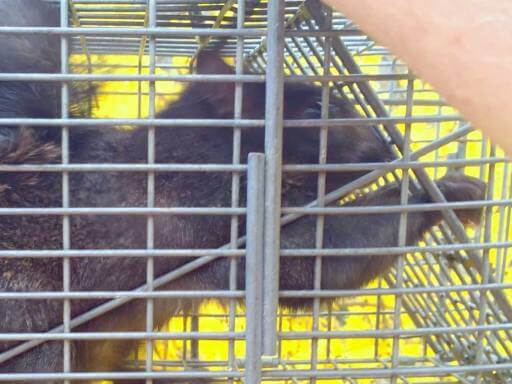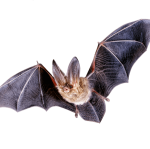Diseases Squirrels Carry
Similar to rats and other rodents, squirrels can catch and even spread diseases that can be harmful to humans and household pets alike. These diseases include bubonic plague, rabies, bacterial infections, fungal infections, and squirrel pox. The symptoms can range from mild discomfort to a life-threatening disease so it’s extremely important to be aware of any symptoms that you or a squirrel show.
The Bubonic Plague
Although rats are infamous for carrying the bubonic plague, squirrels can easily contract it. Some squirrels show symptoms of the bubonic plague which include rashes, fever, lethargy, weakness, and sometimes gangrene while other squirrels don’t manifest any symptoms but can still transmit the disease. Luckily medicine has evolved dramatically since the middle ages and the bubonic plague can be treated with easily accessible antibiotics.

Rabies
On the other hand, squirrels are infamous for spreading rabies. In reality, a squirrel getting infected with rabies is rather rare and the symptoms are consistently present, making it relatively easy to avoid. The symptoms of rabies in squirrels include excess saliva, sensitivity to light, and notably aggressive behaviour. Rabies will only spread to humans if the squirrel breaks your skin with a bite or a scratch, so if you keep your distance, it shouldn’t be an issue. If you hurry to the hospital after the transmission, rabies can be treated with ease but if you let the disease fester it can quickly become life-threatening.
Bacterial Infections (tularemia and leptospirosis)
Squirrels most commonly become infected with bacterial infections due to contaminated water, infectious bugs, or animal bites. Tularemia and leptospirosis can both be transmitted to humans and can be fatal. These bacterial infections can cause liver and kidney failure. If you find a squirrel throwing up, with puss in a sore, or tiny red patches: be sure to steer clear and call your local authorities.
Fungal Infections
A squirrel with patches of hair missing or dark spots generally implies that this squirrel has a fungal infection. Fungal infections like ringworm may spread to humans but, in general, fungal infections are common and treatable. If you do see a squirrel matching the symptoms described, be sure to keep children and pets away from the squirrel as they can get a more unpleasant form of fungal diseases. Additionally, just like for bacterial infections, be sure to call the local authorities or a vet to make sure that they’re aware of the outbreak.
Squirrel Pox
Sometimes, when a squirrel is bitten by an insect, it can develop squirrel pox or squirrel fibroma. The infected squirrel will develop large lumps and tumours on its skin. Although these lumps look intimidating, they’re generally harmless to squirrels. Also, squirrel fibroma cannot transmit to humans or any other common household pets other than rabbits but it does increase the chance that a squirrel contracts some other infectious disease.
Select Your Animal

Raccoons
Raccoon Removal Information & How-To Tips

Squirrel
Squirrel Removal Information & How-To Tips

Opossum
Opossum Removal Information & How-To Tips

Skunks
Skunks Removal Information & How-To Tips

Rats
Rat Removal Information & How-To Tips

Mouse
Mouse Removal Information & How-To Tips

Bat
Bat Removal Information & How-To Tips

Bird
Bird Removal Information & How-To Tips

Snake
Snake Removal Information & How-To Tips

Beaver
Beaver Removal Information & How-To Tips

Mole
Mole Removal Information & How-To Tips

Vole
Vole Removal Information & How-To Tips

Gopher
Gopher Removal Information & How-To Tips

Rabbit
Rabbit Removal Information & How-To Tips

Woodchuck
Woodchuck Removal Information & How-To Tips

Flying Squirrel
Flying Squirrel Removal Information & How-To Tips

Chipmunk
Chipmunk Removal Information & How-To Tips

Coyote
Coyote Removal Information & How-To Tips

Fox
Fox Removal Information & How-To Tips

Wild Hog
Wild Hog Removal Information & How-To Tips

Dead Animal
Dead Animal Removal Information & How-To Tips